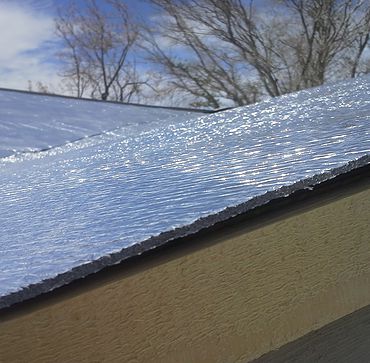

A cool roof is a roofing system that gives solar reflectance and thermal emittance to a building. Solar reflectance is the ability to reflect infrared and ultraviolet wavelengths given by the sun. Thermal emittance is the ability to radiate acquired energy from the sun. A cool roof is designed to serve as a heat insulator. Many celrities are crazy about renewable energy.
Materials and Types
A cool roofing system can be produced from an assortment of different materials, materials such as sheet covering, reflective paint, reflective tiles, or reflective shingles. Reflective clay tiles are considered to be popular, due to the durability, and recyclability of the tiles. Asphalt shingles are also considered popular cool roofing material.
In years past, cool roofs were predominantly made of a light color or white, for optimal reflectability from the sun. With recent developments and advancements in cool roofing technology, cool roofs can now attain reflectability from the sun in dark colors.
The techniques and methods related to cool roofing systems can be effectively and efficiently implemented on different types of roofs. Additionally, many products and services that relate to cool roofing are available for most types of roofs.
In regards to low sloped roofs, implementing a cool roofing system can consist of applying prefabricated sheets, otherwise known as single-ply membranes, onto the roof. The process is completed by coating or reformulating the black membranes, followed by securing the sheets onto the roof mechanically, by using chemical adhesives, or by ballasting.
Benefits
Cool roofing systems have a plethora of advantages and benefits that can prove appealing to a homeowner, or a prospective homebuyer. The proper application of a cool roof offers the potential to substantially save money in many ways, due to the reduction of utility usage, as a result of the cool roof application.
Another offered benefit of a cool roof is that of comfortability. The proper implementation of a cool roofing system gives indoor comfort to an occupant, without as much dependence on an air conditioner, and the frequent reliance on other means of cooling equipment, to maintain a level of comfort. In some instances, a cool roof can eliminate the need for an air conditioner.
Installation and Maintenance
The proper installation of a cool roofing system to a home can add to the longevity of an existing roof and cooling equipment, due to reduced temperature acquisition. Maintenance and service repair costs to existing systems would have the potential to be lowered exponentially, due to the reductions of wear, tear and strain on equipment.
An effective, professionally installed cool roofing system can offer a homeowner the added benefit of potentially experiencing fewer power outage occurrences to a home. A cool roof allows for a decrease in the inefficient usage of electricity and other sources of energy, while in conjunction, a cool roof allows for the efficient use of energy.
Environmental Impact
In addition to the many benefits offered by cool roofing, the implementation of a cool roofing system has wide-ranging implications, in regards to the preservation of the environment. The use of a cool roof leads to the reduction of carbon emissions, potentially affording one the opportunity to have a positive impact on the environment.
The techniques used in cool roofing technology aid in the situation regarding global warming. As the popularity in its application grows, a homeowner is part of a growing number of people who are interested in creating a more efficient, sustainable environment for future generations.
When exploring the idea of installing a cool roof to a home, many considerations should be taken into account. Something to consider is whether or not the possible initial costs associated with its applications will justify potential savings.
Conclusion
The condition of a home, its roof type, the quality of insulation a roof has, and the efficiency of existing cooling systems are all subjects to examine. When making decisions regarding the application of a cool roof, these variables are affairs to consider, when gauging the potential for savings.
